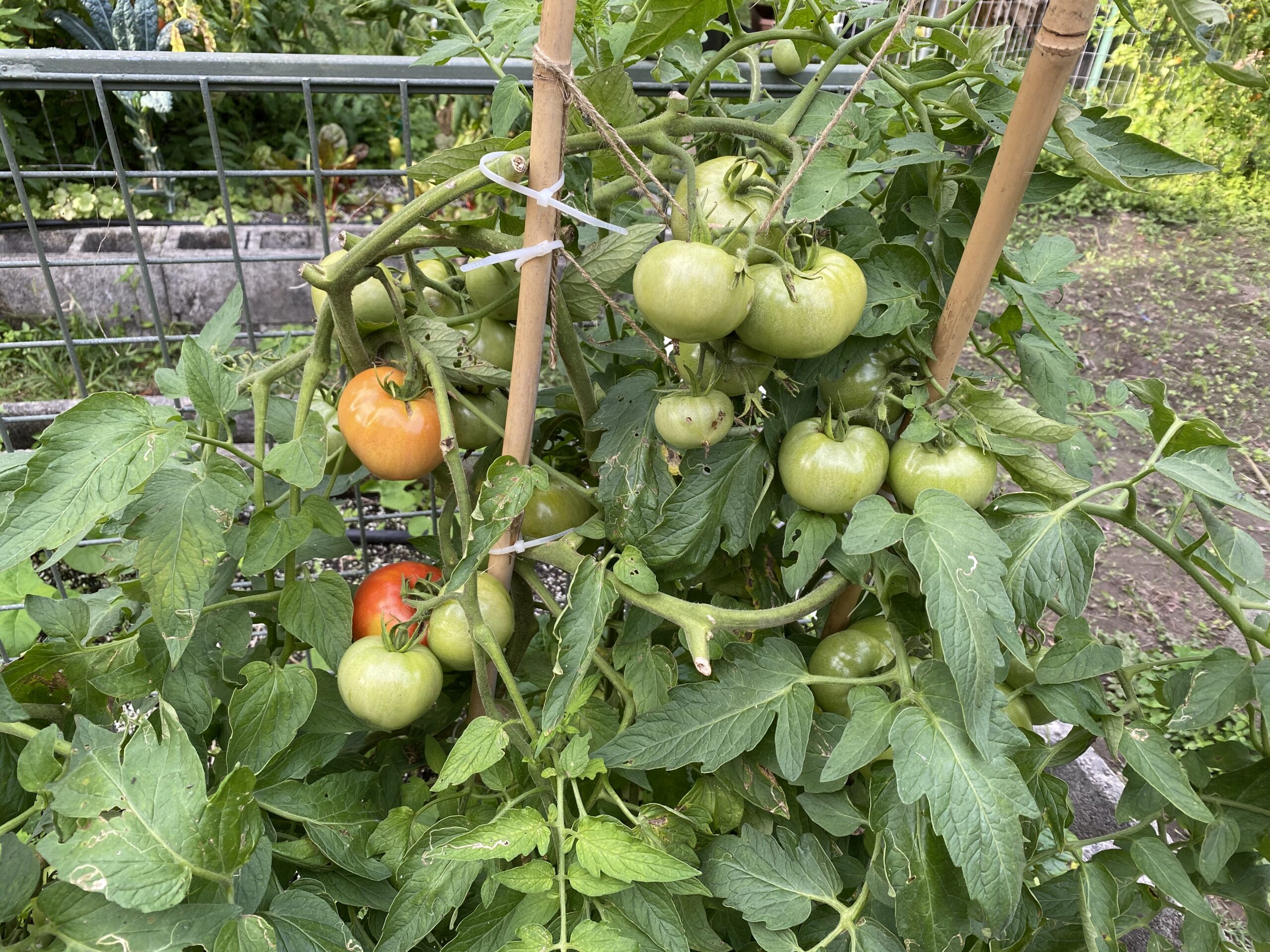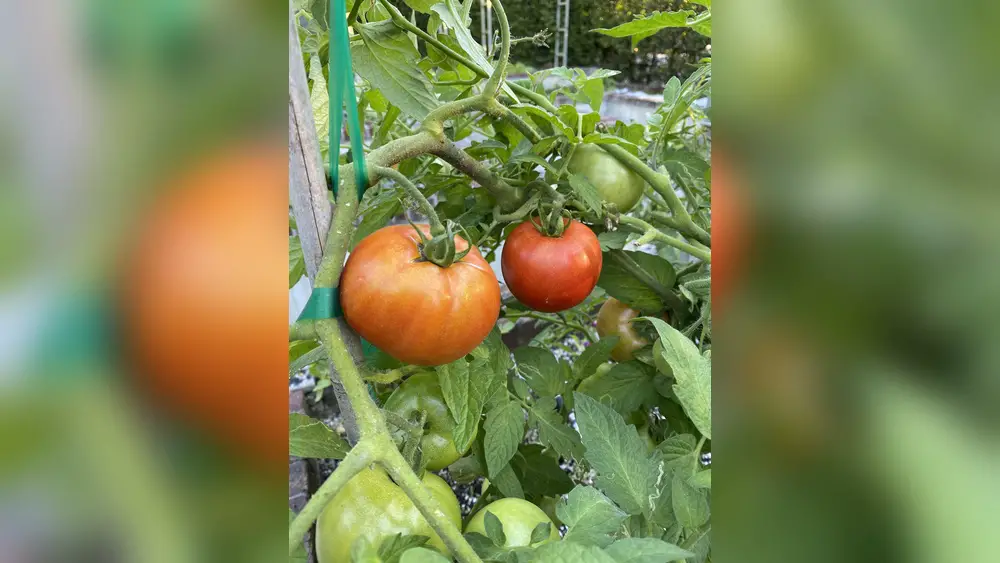If you live in South Florida and love fresh, juicy tomatoes, you know how tricky it can be to find the right tomato plant that thrives in the heat and humidity. You want a variety that won’t just survive but will flourish, giving you a bountiful harvest of delicious fruit all season long.
Choosing the best tomato plant for South Florida means picking one that can handle intense sun, warm nights, and occasional heavy rains without giving up. You’ll discover which tomato varieties are perfect for your garden, how to grow them successfully, and tips to keep your plants healthy and productive.
Ready to grow the best tomatoes you’ve ever tasted? Let’s dive in and find the perfect match for your South Florida garden!

Credit: pindersnursery.com
Heat-tolerant Tomato Varieties
South Florida’s hot climate challenges tomato growing. Many tomato plants wilt under strong sun and heat. Choosing heat-tolerant tomato varieties improves growth and yield. These varieties handle high temperatures better. They resist cracking and keep producing fruit longer. Heat-tolerant tomatoes make gardening more rewarding in South Florida.
Dark-colored Tomatoes
Dark-colored tomatoes often tolerate heat well. Their deep pigments protect the fruit from sun damage. Varieties like Black Sea Man and Paul Robeson thrive in warm climates. These tomatoes have rich flavors and good texture. They also resist common tomato diseases. Dark tomatoes add color and nutrition to your garden.
University-bred Varieties
Universities in Florida develop tomato varieties for local heat. These plants adapt to South Florida’s climate and soil. Varieties such as Floridade and Marglobe show strong heat tolerance. They produce steady yields despite hot weather. University-bred tomatoes also resist pests and diseases common in the region. These reliable plants suit beginner and expert gardeners alike.
Popular Heirlooms For Heat
Some heirloom tomatoes survive heat better than others. Cherokee Purple and Green Zebra are favorites among gardeners. These heirlooms offer unique flavors and colors. They perform well in warm conditions if given proper care. Heirloom tomatoes bring variety and tradition to South Florida gardens. Their heat tolerance makes them a smart choice for local growers.
Best Cherry Tomatoes For South Florida
Cherry tomatoes thrive in South Florida’s warm climate. Their small size and sweet flavor make them a favorite for gardeners. Selecting the right cherry tomato variety ensures a fruitful harvest despite the heat and humidity. Many heat-tolerant varieties flourish well in this region, producing abundant, juicy fruits.
Heat-loving Cherry Varieties
Several cherry tomato types grow well under South Florida’s intense sun. ‘Solar Fire’ resists heat and disease, offering bright red, sweet fruits. ‘Sweet 100’ produces clusters of small, sugary tomatoes and tolerates heat better than many other varieties. ‘Sun Gold’ is another popular choice, known for its golden-orange color and rich sweetness. These varieties handle high temperatures and continue producing throughout the growing season.
Growing Tips For Cherry Tomatoes
Plant cherry tomatoes in well-drained soil rich in organic matter. Choose a spot with full sun, at least six hours daily. Water plants deeply but avoid wetting leaves to reduce disease risk. Mulching helps keep soil moist and controls weeds. Support plants with cages or stakes to keep fruit off the ground. Regularly remove yellow leaves to improve air circulation. Fertilize with balanced nutrients every few weeks to promote healthy growth and fruiting.
Planting Schedule In South Florida
Understanding the planting schedule is key for growing healthy tomato plants in South Florida. The region’s warm climate and unique weather patterns influence the best times to plant. Knowing the right months and seasonal factors helps ensure strong growth and a good harvest.
South Florida gardeners benefit from planning their tomato planting around local climate conditions. This approach reduces risks from heat stress and pests. It also maximizes the growing season to enjoy fresh tomatoes for longer.
Optimal Planting Months
Tomatoes grow best in South Florida from late summer to early spring. The ideal months for planting are August through March. Starting plants in these months avoids the hottest summer peaks. This timing allows plants to mature in cooler, more stable weather. Early spring planting gives a head start before the heat intensifies. Late summer planting uses the tail end of the rainy season for easy watering. Avoid planting during the hottest months of May to July. This period often causes poor fruit set and plant stress.
Seasonal Considerations
South Florida’s climate brings unique challenges like intense heat and humidity. High temperatures can cause flowers to drop and fruits to crack. To protect plants, choose heat-tolerant tomato varieties. Providing some afternoon shade helps reduce heat impact. Watch for heavy rains and humidity that increase disease risks. Good air circulation around plants lowers fungal problems. Adjust watering schedules to keep soil moist but not wet. Plan planting to avoid hurricane season, which can damage plants. Monitoring weather patterns and soil conditions improves tomato success in this region.

Credit: www.soflagardening.com
Soil And Fertilizer Recommendations
Healthy soil and proper fertilization play key roles in growing the best tomato plants in South Florida. The region’s sandy soil needs careful preparation to hold nutrients and moisture. Balanced fertilization supports strong growth and tasty fruit. Understanding the soil and fertilizer needs helps gardeners achieve better yields in Florida’s warm climate.
Soil Preparation Tips
Start by testing the soil pH; tomatoes prefer a range of 6.0 to 6.8. Add organic matter like compost or aged manure to improve soil texture. This helps sandy soil retain water and nutrients. Till the soil to a depth of 8 to 12 inches to loosen it. Remove weeds and debris to reduce competition. Mulching after planting keeps moisture steady and lowers soil temperature.
Homemade Fertilizer Ideas
Use kitchen scraps like banana peels and eggshells to add potassium and calcium. Compost tea made from decomposed organic matter boosts soil microbes. Mix fish emulsion or seaweed extract with water for a nutrient-rich foliar spray. Coffee grounds add nitrogen and improve soil acidity slightly. These natural fertilizers feed tomato plants gently and reduce chemical use.
Watering And Shade Strategies
Growing tomato plants in South Florida requires smart watering and shade strategies. The region’s heat and humidity challenge even the hardiest plants. Proper water and shade help tomatoes stay healthy and produce more fruit. Understanding these techniques improves your garden’s success.
Consistent Watering Practices
Tomato plants need steady moisture to grow well. Water the soil deeply and regularly. Avoid letting the soil dry out completely. Water in the early morning to reduce evaporation. Use drip irrigation or soaker hoses for best results. Wet leaves can cause diseases, so water the base of the plant only. Consistent watering helps prevent blossom drop and fruit cracking.
Using Shade To Protect Plants
South Florida’s sun can be harsh on tomato plants. Provide shade during the hottest part of the day. Use shade cloth with 30 to 50 percent density. Place it above the plants to filter sunlight. Shade reduces heat stress and slows water loss. Natural shade from taller plants can also help. Proper shading keeps tomatoes from sunscald and improves fruit quality.
Container Gardening Tips
Growing tomatoes in containers is perfect for South Florida gardens. It saves space and controls soil quality. Container gardening also helps manage watering and pests more easily. Success depends on choosing the right pots and caring well for your plants.
Choosing The Right Pots
Select containers that are at least 12 inches deep. Bigger pots hold more soil and keep roots cool. Use pots with drainage holes to avoid water buildup. Clay or ceramic pots work well but dry out faster. Plastic pots keep soil moist longer. Choose a pot that suits your space and style.
Maintaining Tomato Plants In Containers
Water tomato plants daily, especially in hot South Florida weather. Soil should stay moist but not soggy. Use a balanced fertilizer every two weeks for strong growth. Place containers where plants get 6 to 8 hours of sunlight. Remove yellow leaves and support plants with stakes or cages. Check for pests regularly and act quickly to protect your crop.
Common Challenges And Solutions
Growing tomato plants in South Florida brings unique challenges. The warm climate and humidity create conditions that pests, diseases, and heat stress thrive in. Understanding these problems helps gardeners protect their plants and boost harvests.
Simple care steps and timely actions can keep tomato plants healthy. Knowing what to expect makes gardening more enjoyable and successful.
Pests And Diseases In South Florida
Tomato plants in South Florida often face pests like whiteflies, aphids, and tomato hornworms. These insects can quickly damage leaves and fruits. Regularly check plants for signs of pests. Use insecticidal soap or neem oil to control infestations.
Fungal diseases such as early blight and powdery mildew are common due to humidity. Removing infected leaves and improving airflow helps reduce disease spread. Applying fungicides at the first sign of disease protects plants effectively.
Managing Heat Stress
South Florida’s heat can stress tomato plants, causing leaf curl and poor fruit development. Plant tomatoes in spots with afternoon shade to reduce heat impact. Mulching around plants keeps soil cool and moist.
Water consistently but avoid waterlogging. Heat-tolerant tomato varieties like Black Sea Man and Floridade handle heat better. Using shade cloth on extremely hot days also helps keep plants healthy and productive.
Local Resources And Seed Suppliers
Finding the right tomato plants for South Florida means sourcing seeds and plants that thrive in heat and humidity. Local resources offer varieties bred for this region’s unique climate. These suppliers provide plants that resist disease and produce fruit despite the heat. Knowing where to get these seeds and plants saves time and improves your harvest success.
Nurseries Specializing In Heat-tolerant Tomatoes
Local nurseries in South Florida carry tomato plants suited for hot weather. These nurseries focus on varieties like Floridade, Marglobe, and Homestead. They also stock heirloom types adapted to the climate, such as Black Sea Man and Black Beauty. Staff often give advice on planting and care for the best results. Visiting these nurseries helps gardeners pick strong, healthy plants.
Online Seed Sources
Online seed suppliers offer a wide selection of heat-tolerant tomato seeds. Many specialize in varieties that grow well in South Florida. Popular seeds include Paul Robeson, Sart Roloise, and Lucid Gem. Ordering online provides access to rare and tested varieties not always found locally. Shipping is usually fast, ensuring seeds arrive fresh and ready for planting.

Credit: pindersnursery.com
Frequently Asked Questions
What Is The Best Tomato Variety To Grow In South Florida?
The best tomato varieties for South Florida include heat-tolerant types like Black Sea Man, Paul Robeson, and Floridade. Choose darker-colored tomatoes for better heat resistance and consistent yields.
What Month Do You Plant Tomatoes In South Florida?
Plant tomatoes in South Florida from August through March for the best growth. Choose heat-tolerant varieties like Black Sea Man or Floridade.
What Is The Most Heat-tolerant Tomato?
The most heat-tolerant tomato varieties include Arkansas Traveler, Bella Rosa, BHN-216, Black Cherry, and Celebrity. These thrive in hot climates and resist heat stress well.
How Do You Grow Tomatoes In Florida Heat?
Grow heat-tolerant tomato varieties like Black Sea Man or Celebrity. Provide afternoon shade, water consistently, and use organic fertilizer. Plant from August to March for best results.
Conclusion
Choosing the right tomato plant helps you enjoy fresh fruit all season. Heat-tolerant varieties thrive in South Florida’s warm climate. Plant during the cooler months for best results. Regular watering and some shade improve growth and flavor. Try varieties like Black Sea Man or Marglobe for success.
Growing your own tomatoes can be simple and rewarding. Start small, learn as you go, and enjoy homegrown tomatoes soon.

